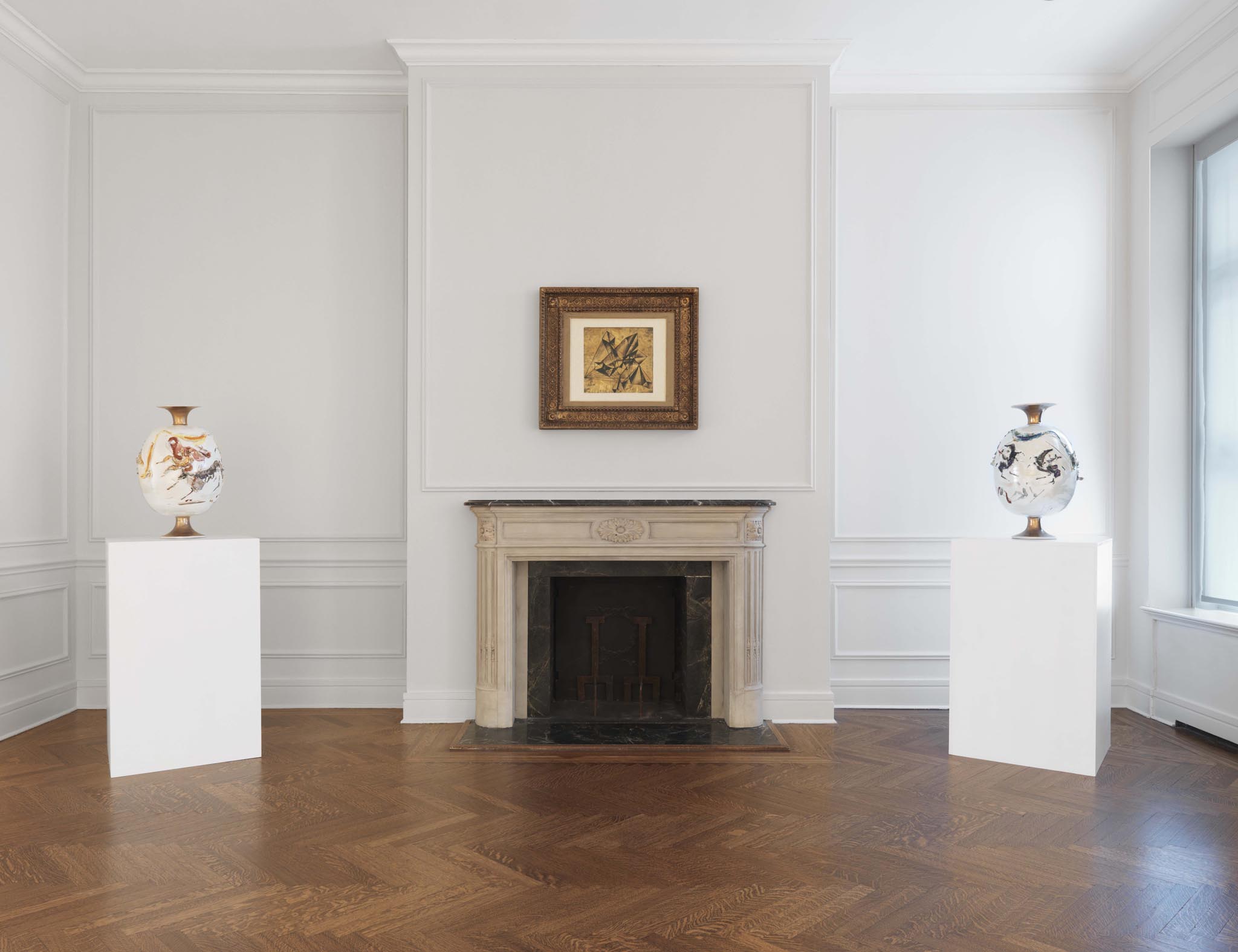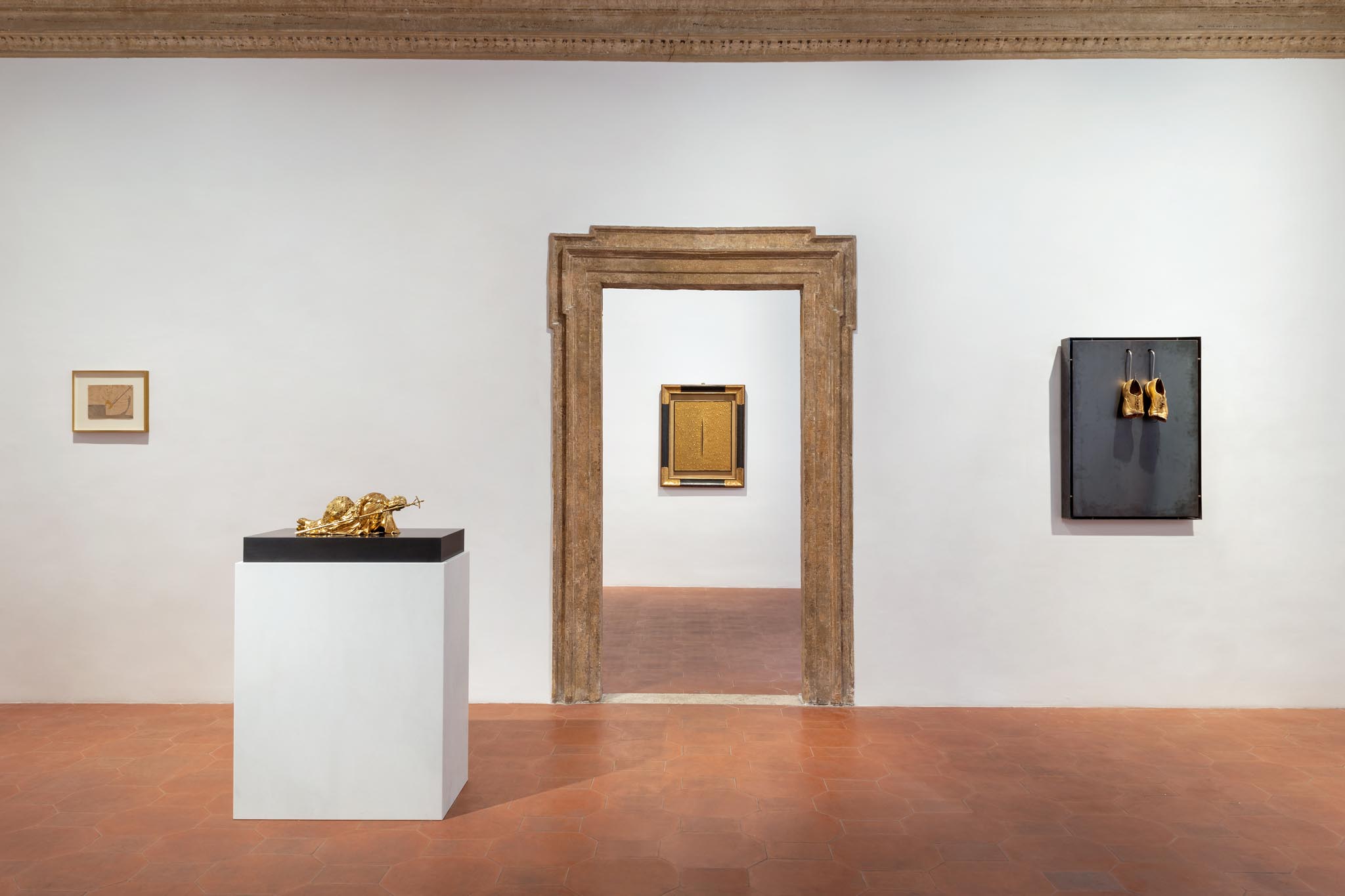Fausto Melotti (Rovereto, 1901 – Milan, 1986) enrolled at the Faculty of Physics and Mathematics at the University of Pisa in 1918, later continuing his studies at the Milan Polytechnic, where he graduated in electrical engineering in 1924. Melotti simultaneously nurtured his passion for music, earning a diploma in piano performance, and sculpture, studying under Pietro Canonica in Turin.
In 1928, Melotti began a new academic chapter by enrolling at the Brera Academy in Milan, where he studied under Adolfo Wildt. It was there that he developed a lasting friendship with Lucio Fontana.
In 1932, Melotti began teaching at the Cantù School of Arts and Crafts, where he led a course on modern plastics.
In 1935, Melotti joined the Abstraction-Création movement, founded in Paris in 1931 by Theo Van Doesburg, Michel Seuphor, and Georges Vantongerloo, which aimed to promote non-figurative art. That same year, Melotti’s cousin, Carlo Belli, authored the seminal theoretical text titled Kn, which Kandinsky referred to as “the Gospel of Abstract Art.” This was a conceptual reflection on the experiments of abstract artists, including Belli and Melotti.
1935 also marked the year that Melotti, along with a group of other abstractionists, took part in the first group exhibition of abstract art at the studio of Felice Casorati and Enrico Paulucci in Turin. At Milan’s Galleria del Milione, he exhibited sculptures inspired by musical counterpoint. Although his debut exhibition attracted little attention in Italy, he gained recognition in France—thanks to art dealer Léonce Rosenberg—and in Switzerland, where he was awarded the La Sarraz International Prize in 1937.
That same year, during the 6th Milan Triennale, he presented a pivotal work, La Costante Uomo, for the Sala della Coerenza, a space designed by the architectural firm B.B.P.R. (Banfi, Belgiojoso, Peressutti, Rogers).
From 1941 to 1943, Melotti lived in Rome, where he contributed to Luigi Figini and Gino Pollini’s design for the Palace of the Armed Forces. During this time, he also produced drawings, paintings, and poems, later published by Giovanni Scheiwiller in 1944 under the title Il triste Minotauro.
After the war, Melotti devoted himself to ceramics, developing a refined technique that earned him widespread acclaim. His mastery was recognized with numerous awards, including the Grand Prize at the 1951 Triennale, as well as gold medals in Prague and Munich. During this period, he formed a close professional and personal relationship with Giò Ponti, collaborating on notable projects such as Villa Planchart in Caracas (1956) and Villa Nemazee in Tehran (1960).
In 1967, Melotti unveiled a new series of sculptures at Galleria Toninelli in Milan, marking the beginning of a series of exhibitions in Italy and abroad. These shows introduced audiences to the full range of his artistic output, which included sculptures, bas-reliefs, theatrical works, drawings, and ceramics.
Linee, his collection of writings and poems, was published by Adelphi in 1974, and awarded the Diano Marina Prize in 1975.
In 1979, a major solo exhibition was held at Palazzo Reale in Milan, followed in 1981 by a large retrospective at Forte Belvedere in Florence, for which Italo Calvino wrote Gli effimeri, a poetic text dedicated to Melotti’s work of the same name, describing it as “a score of weightless ideograms like aquatic insects that seem to twirl on a brass espalier shielded by a gauze thread.”
During the 1980s, Melotti was celebrated with numerous solo and group exhibitions in cities such as Florence, Rome, Venice, New York, London, Zurich, Frankfurt, and Paris.
Fausto Melotti died in Milan on June 22, 1986. That same month, he was posthumously awarded the Golden Lion for Lifetime Achievement at the 42nd Venice Biennale of Visual Arts.

